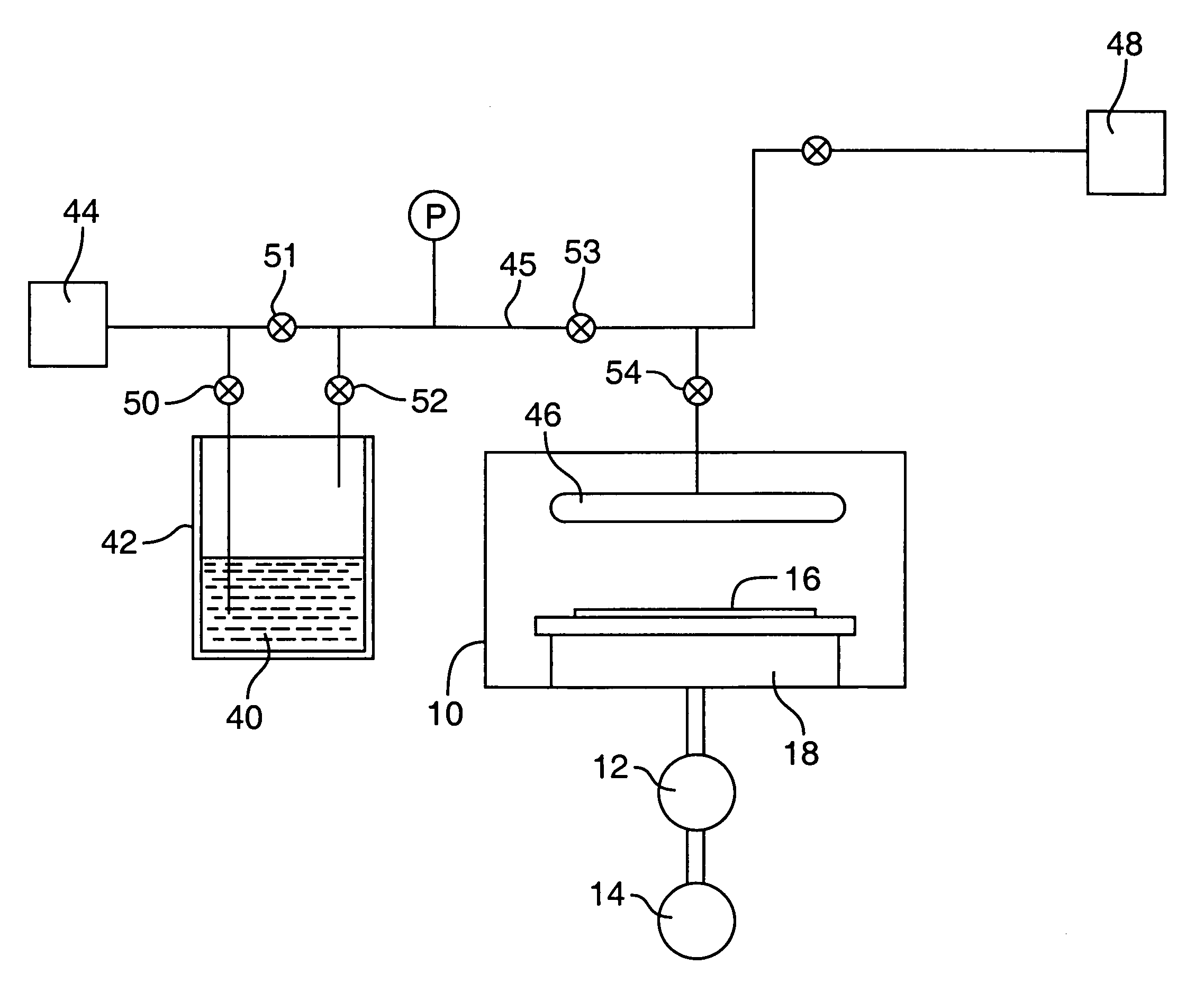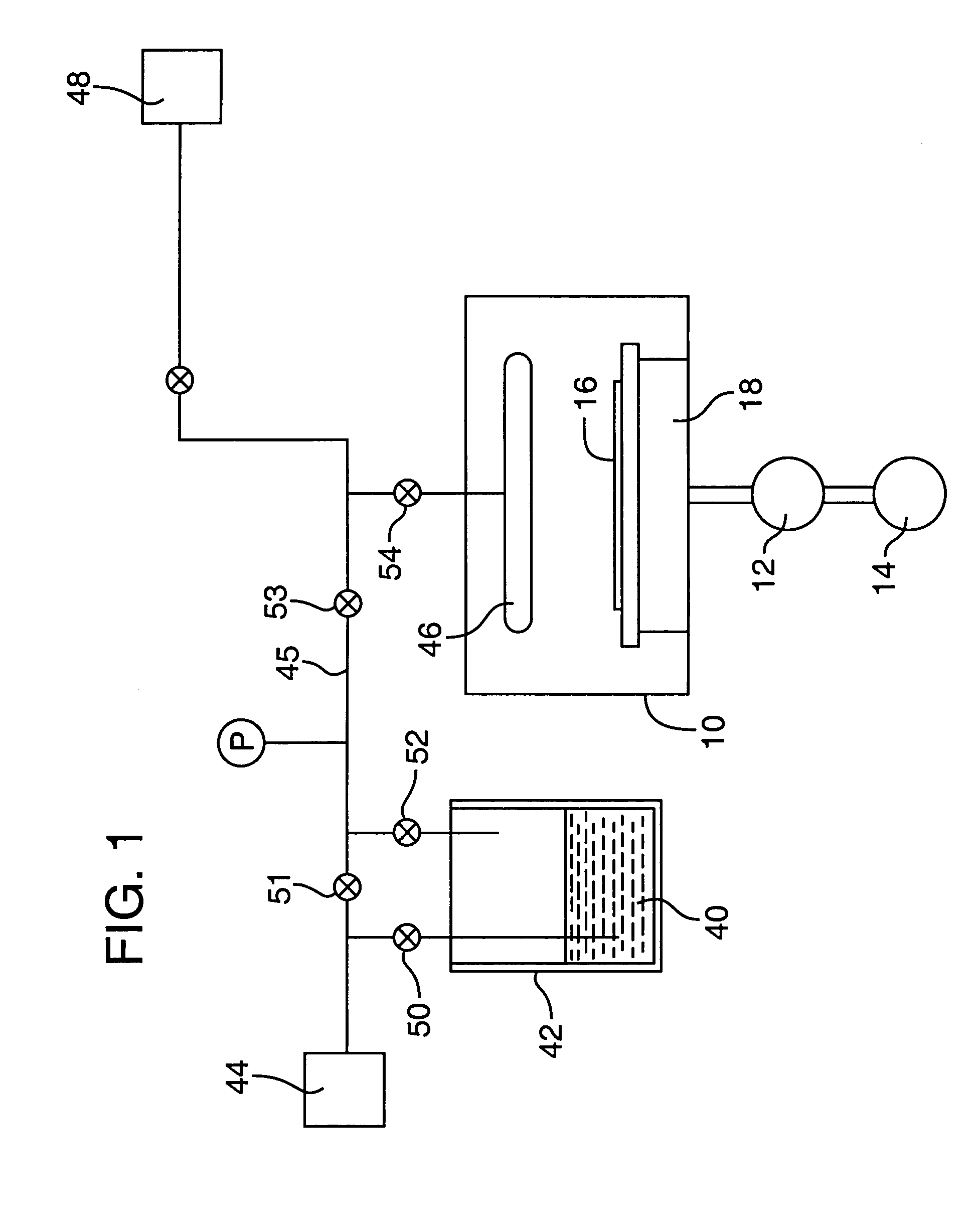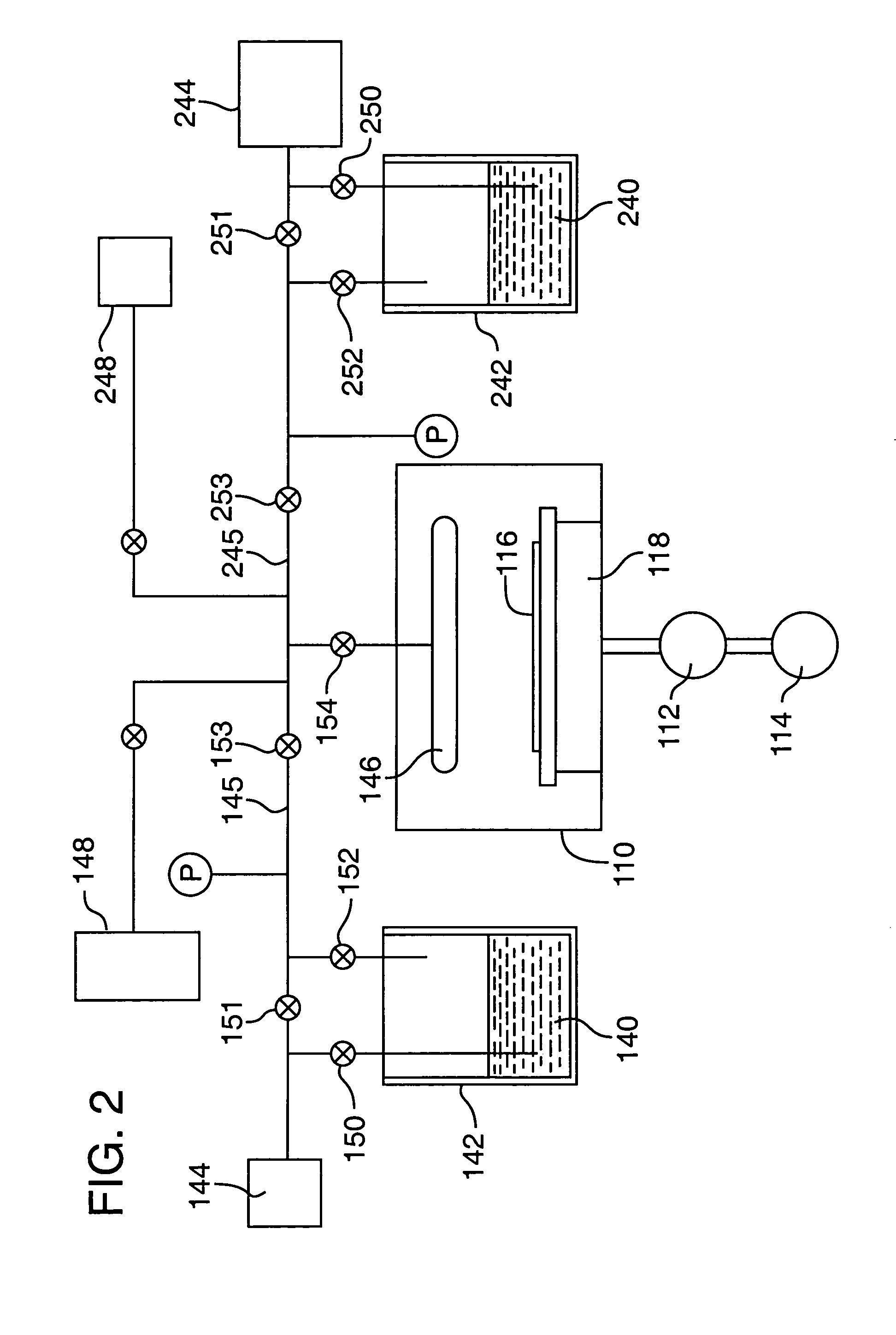Chemical vapor deposition methods utilizing ionic liquids
- Summary
- Abstract
- Description
- Claims
- Application Information
AI Technical Summary
Benefits of technology
Problems solved by technology
Method used
Image
Examples
example
[0048]This is an example of a chemical vapor deposition method of the present invention for the formation of a (Ba,Sr)TiO3 thin-layer on a substrate, using an ionic liquid CVD solvent. Three precursors, Bis(isopropoxide)bis(2,2,6,6-tetramethyl-3,5-heptanedionato)titanium, Bis(2,2,6,6-tetramethyl-3,5-heptanedionato)strontium and Bis(2,2,6,6-tetramethyl-3,5-heptanedionato)barium (all available from, e.g., Strem Chemicals, Inc., of Newburyport, Mass.) are individually dissolved in separate vessels, each vessel containing a quantity of an ionic liquid comprising 1-Ethyl-3-methyl-1H-imidazolium tetrafluoroborate (available from, e.g., Aldrich Chemical Co., Inc., of Milwaukee, Wis.). As much of each precursor as possible is dissolved in the solvent. The solvent solutions having the precursors dissolved therein, are then placed in separate bubbler vessels (e.g., 142 and 242 of FIG. 2; although not shown in FIG. 2, a third analogous vessel and associated delivery means would be required in ...
PUM
| Property | Measurement | Unit |
|---|---|---|
| Temperature | aaaaa | aaaaa |
| Temperature | aaaaa | aaaaa |
Abstract
Description
Claims
Application Information
 Login to View More
Login to View More - R&D
- Intellectual Property
- Life Sciences
- Materials
- Tech Scout
- Unparalleled Data Quality
- Higher Quality Content
- 60% Fewer Hallucinations
Browse by: Latest US Patents, China's latest patents, Technical Efficacy Thesaurus, Application Domain, Technology Topic, Popular Technical Reports.
© 2025 PatSnap. All rights reserved.Legal|Privacy policy|Modern Slavery Act Transparency Statement|Sitemap|About US| Contact US: help@patsnap.com



